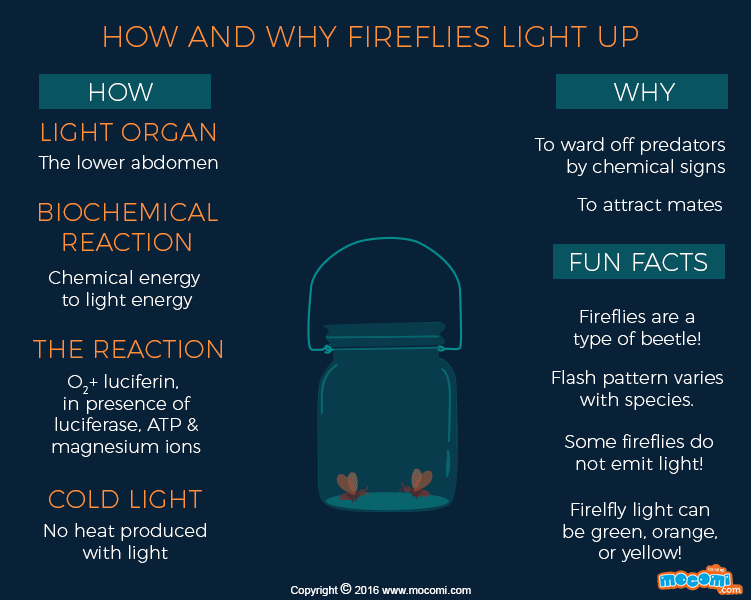Lightning bugs in a field on a summer night are probably the most magical thing to ever see, and often, as we see these bugs work their light magic, we wonder how they do it. Well, scientists have finally figured out exactly what makes these beetles light up. That’s right, even though they’re called fireflies, they’re actually a beetle species.
How do Fireflies light up?
Fireflies produce light due to a biochemical reaction that takes place in their body, specifically, their light organ which is usually in their lower abdomen. Through this reaction, they convert chemical energy into light energy. This phenomenon is called bioluminescence. Bioluminescence is also found in other species such as plankton and some types of algae. Scientists have been keen to know exactly what induces this biochemical reaction to occur and have finally figured it out.
The light producing organs of fireflies are made up of cells which contain the chemical luciferin. Luciferin combines with oxygen, in the presence of calcium and magnesium ions and ATP to form oxyluceferin. The process is sped up by an enzyme called luciferase. This is biochemical reaction that causes light to be produced in a firefly.
The best part about fireflies is that their light is a cold light, i.e. unlike a bulb, it doesn’t give off heat. Thus, if a firefly sat on your palm, you can experience the magic and not feel the sting.
Why do Fireflies light up?
Well, fireflies glow for multiple reasons, such as warding off predators and attracting mates. The glow from fireflies of different species if different. It can be green, yellow or orange. In fact, different species of fireflies also have different flash patterns. This is probably to identify its species and not attract a member of a different firefly species. Some species of fireflies do not emit light at all, relying on pheromones to attract mates instead. Fireflies also emit light to signal to their predators that they wouldn’t make tasty meals.
Side note : Although fireflies in amazon jar make for a pretty sight, always leave holes on the cap for them to breathe and always, always make sure you don’t keep them locked up for more than a couple of days.


